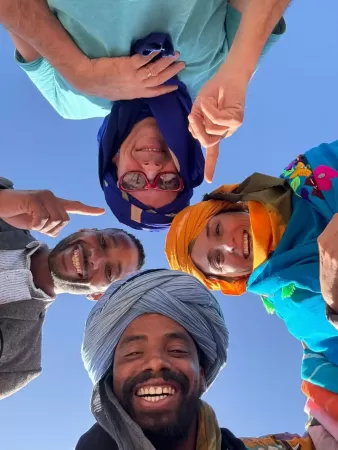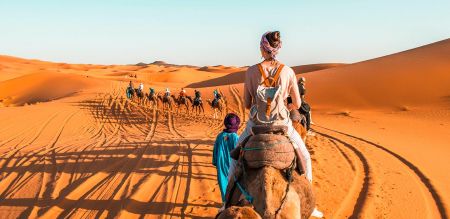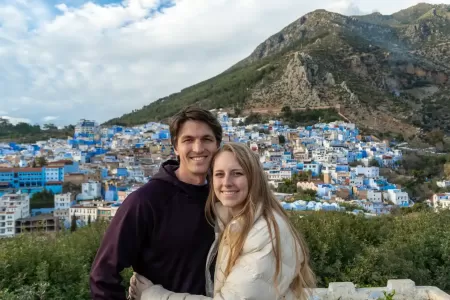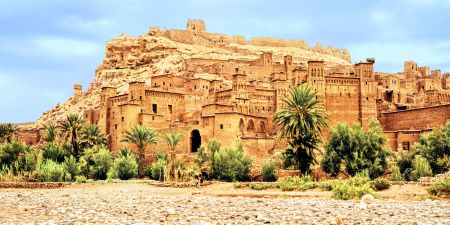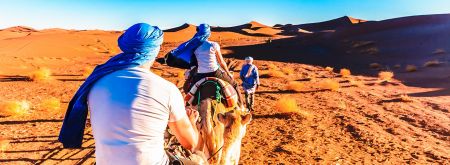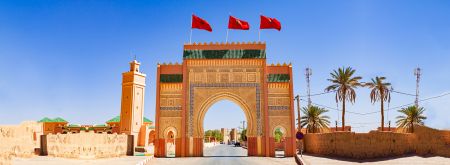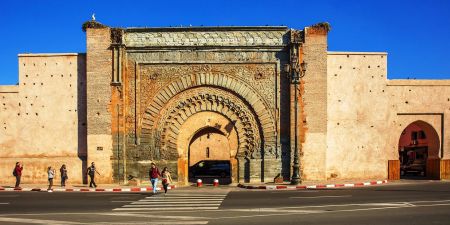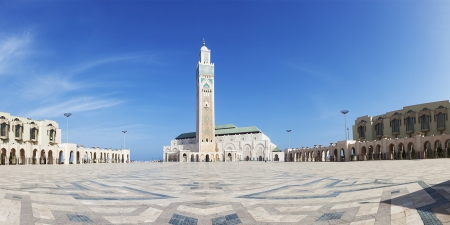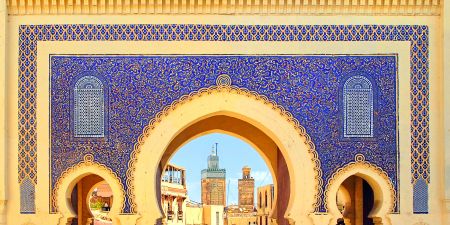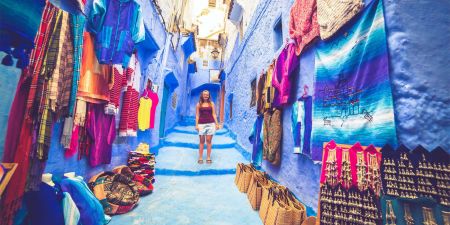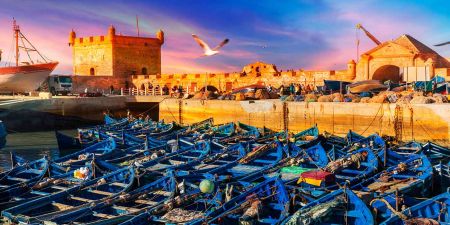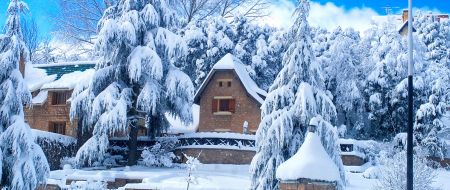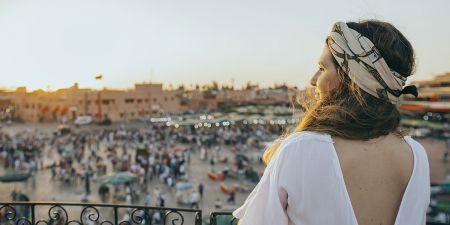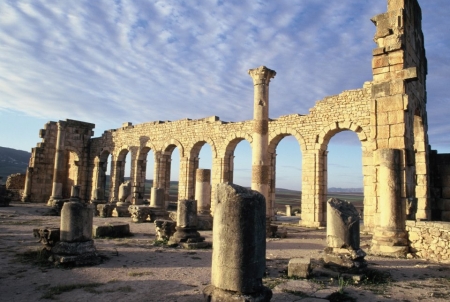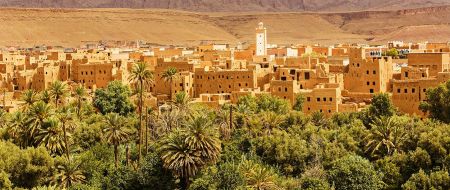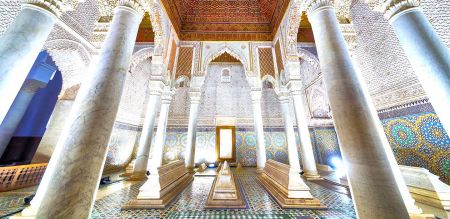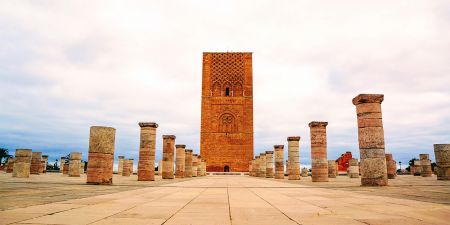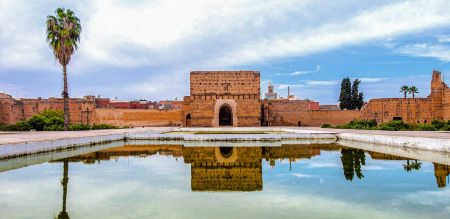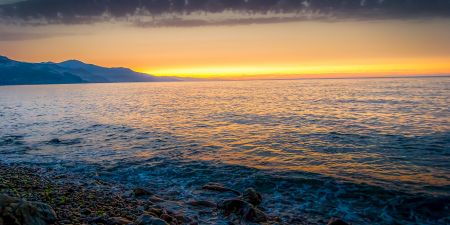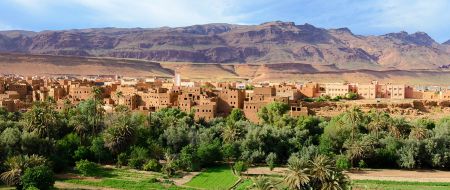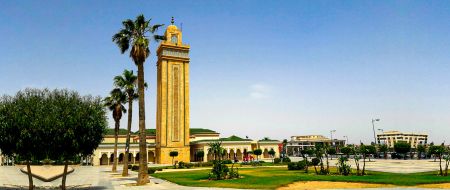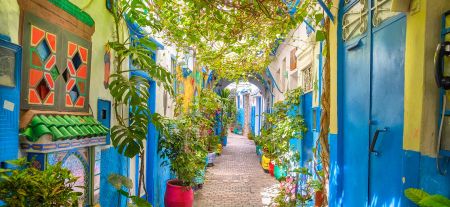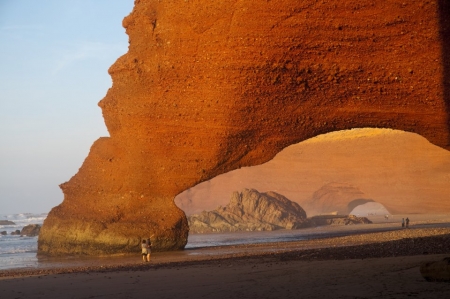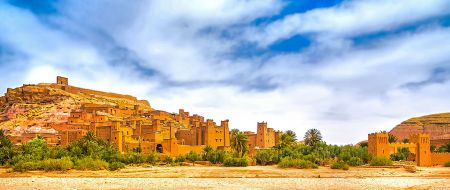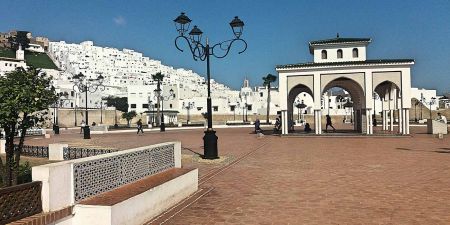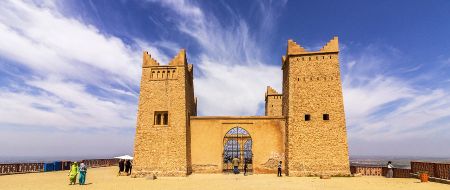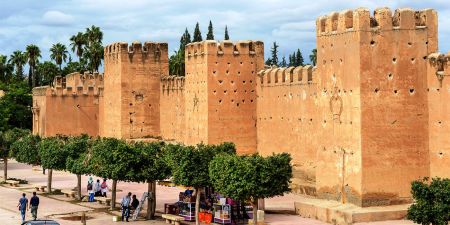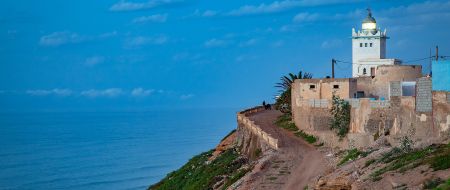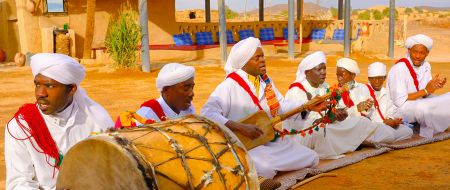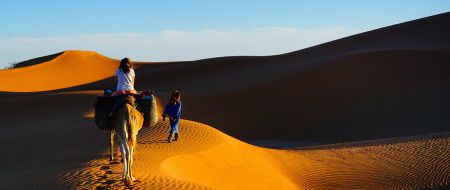Imlil Morocco: A Local's Guide to the Hidden Gem of Atlas Mountains

Imlil, Morocco, is a perfect place to escape into the Atlas Mountains. Compared to Marrakech, the region of Imlil is cooler and more tranquil. Besides, here in Imlil, prices for accommodation and provisions are nothing compared to what they cost in Marrakech.
Perched at 1,800 meters (5,900 feet) above sea level, Imlil, Morocco, serves as the primary gateway to Jebel Toubkal, Northern Africa's highest peak, soaring to 4,167 meters (13,671 feet). This strategic position explains why 90% of mountain enthusiasts start their Toubkal adventures from this small yet significant village.
What makes the Imlil valley in Morocco particularly fascinating is its remarkable transformation over the past 25 years. Once a traditional agricultural community known for its walnuts, apples, and cherries, Imlil has evolved into a bustling tourism hub with various accommodations and services. Today, many local Berbers work as certified mountain guides or guesthouse operators, adapting seamlessly to the tourism boom while maintaining their rich cultural heritage.
Throughout this guide, you'll discover the hidden aspects of Imlil that most tourists miss. From the best times to visit (March, April, and November offer pleasant temperatures between 20-25°C), to authentic experiences with the Amazigh people who have called the High Atlas Mountains home for thousands of years. Additionally, you'll learn about the sustainable initiatives that help preserve this special place nestled within Toubkal National Park, Morocco's first national park covering an impressive 380 km².
Visit Imlil and other stunning places with our Morocco Travel Packages!
The transformation of Imlil over the years
The story of Imlil Morocco, begins not with tourism, but with traditional agriculture. For centuries, this remote High Atlas settlement remained largely isolated from the outside world, with its economy centered around farming practices adapted to the mountainous terrain.
From a farming village to a trekking hub
Before tourism emerged, life in Imlil valley Morocco, revolved around growing walnuts, apples, cherries, barley, and corn on meticulously maintained stepped agricultural terraces. The intricate systems of water management irrigated tiny hillslope terraces and small walled gardens on the floodplain where vegetables were grown and grass pastures established for grazing.
Many farmers followed the traditional practice of transhumance, temporarily moving animals to higher pastures during summer before returning to the valley floor in winter. This sustainable agriculture defined daily life in Imlil for generations.
The late 20th and early 21st centuries marked a dramatic shift in the village's economic focus. As word spread about the breathtaking beauty of the High Atlas and the challenge of climbing Mount Toubkal, Imlil transformed from a quiet farming village into the premier base camp for High Atlas expeditions. In fact, Imlil as a village is relatively new, created specifically to cater for the increasing number of tourists heading to Toubkal.
This transition created new opportunities for local Berbers. Many shifted from agricultural work to roles in the tourism sector, becoming:
- Mountain guides certified by the Moroccan Ministry of Tourism
- Guesthouse and small hotel operators
- Mule handlers for baggage transport
- Restaurant and café owners
- Retail shop owners selling trekking equipment and local crafts
Today, approximately 80% of Imlil's population derives some of their income from tourism. The village serves as the center of mountain tourism in Morocco, with 90% of visitors using it as a base to climb Toubkal.
Key milestones in infrastructure and tourism
The transformation of Imlil can be traced through several crucial infrastructure developments that connected this once-isolated community to the wider world:
1956: Construction of the first road connecting Imlil to the wider region 1997: Electricity finally reaches the valley 1999: Telephone service arrives 2001: Mobile phone coverage begins 2002-2003: Tarmac road constructed between Imlil and Asni 2003: Piped water becomes available in all houses 2007: Tracks bulldozed to all surrounding villages, giving them road access 2017: New road developments including traffic calming measures, raised pavements, and a car park 2018: Street lighting installed and 4G mobile signal becomes available
Consequently, transportation options to Imlil expanded significantly. What once required a strenuous journey can now be accomplished via private car (90-minute drive from Marrakech), shared 'grand taxi', organized tour transport, or public transportation.
Furthermore, accommodation options proliferated, including two luxury properties: Kasbah Tamadot, owned by Richard Branson just outside the village, and the multi-award-winning Kasbah du Toubkal, a restored hill fort voted one of the top five places to stay globally.
The impact of these changes has been profound. Tourism has increased incomes and provided employment opportunities for locals. Nevertheless, this rapid development brings challenges, including waste management issues and the need for sustainable tourism practices[14]. The balance between development and preservation remains crucial for Imlil's future as it continues its remarkable journey from a remote farming village to a world-renowned trekking destination.

The heart of Imlil: Berber culture and community
At the cultural core of Imlil Morocco lies the rich heritage of the Berber people, whose traditions have shaped this mountain community for centuries. Known as Imazighen ("free people") in their own language, these indigenous inhabitants maintain vibrant customs despite the village's growing tourism industry.
Daily life and traditions
Daily life in Imlil revolves around a harmonious relationship with the surrounding mountains. The community is small and close-knit, with families often sharing multi-generational homes built from local materials like stone, wood, and clay. These traditional adobe houses with flat roofs blend perfectly into the mountainous landscape, designed to withstand harsh winter conditions.
The Berber way of life follows nature's rhythms, with villagers working diligently during summer months to prepare for colder winters. Many locals have adapted their livelihoods, transitioning from purely agricultural work to becoming mountain guides or guesthouse operators. However, traditional activities remain central to community life.
Culinary traditions in Imlil showcase the rich Berber heritage. Wheat-based foods form the foundation of meals, including couscous, semolina, and bread. Families traditionally grow their own produce—olives, plums, figs, dates, and various herbs—while raising chickens, goats, and sheep for meat and dairy. The iconic tagine, named after the clay pot in which it's cooked, remains a staple dish, often prepared over two hours for optimal flavor.
Moreover, craftsmanship holds special significance in Berber culture. Throughout the Imlil valley Morocco, artisans practice pottery-making, wool weaving for carpets and clothing, and metalwork—especially silver jewelry with distinctive designs. These crafts aren't merely decorative but serve practical purposes in daily life.
Language, hospitality, and festivals
Tamazight, the Berber language, remains vibrantly alive in Imlil, spoken by locals alongside Arabic. According to recent data, approximately 40% of Moroccans speak Berber languages. For visitors to the Imlil valley Morocco, hearing this ancient language offers a connection to the region's deep cultural roots.
Hospitality stands as a cornerstone of Berber identity in Imlil. Locals are renowned for their warmth and genuine welcome, often inviting travelers into their homes for traditional mint tea ceremonies. This gesture opens doors to meaningful conversations about customs and stories passed through generations. As one visitor described, "The way of life of the Berber people in the mountains is inspiring both for its strength and for its serenity".
Throughout the year, several significant celebrations mark the Berber calendar:
- Yennayer (Berber New Year): Typically celebrated each January, this Amazigh holiday marks the beginning of the agricultural year with special meals and community gatherings.
- Almond Blossom Festival: Usually held in February, this celebration honors the transformation of the landscape during almond tree flowering, featuring music, cultural performances, and creative almond-based recipes.
- Boujloud Festival: Centered around the theme of good versus evil, this event features the colorful "Father of Skins" character who plays tag with children using makeshift sticks while communities dance and sing.
Additionally, some Berbers from Imlil travel to the famous Imilchil Marriage Festival held annually in September. Though primarily a tribute to a bittersweet Moroccan legend rather than an actual wedding ceremony, this event showcases traditional clothing, music, and cultural exchanges.
When experiencing Imlil's cultural offerings, remember that respect for traditions goes hand-in-hand with genuine curiosity. The Berber community's resilience and adaptability have allowed them to maintain their cultural identity even as their economic focus has evolved.
Tourism and its impact on Imlil Valley
Tourism represents the second largest source of income in Morocco, accounting for 12% of the country's GDP and 5% of employment as of 2015. In Imlil valley Morocco, this economic shift has created both opportunities and challenges for the once-isolated mountain community.
Economic opportunities for locals
Today, approximately 80% of Imlil's population derives some income from tourism. This dramatic transformation has created diverse employment pathways for residents who previously relied solely on agriculture. Local Berbers now work as:
- Certified mountain guides (over 60 registered guides in the area)
- Guesthouse and hotel operators
- Mule handlers (up to 150 mules working during the summer season)
- Restaurant and café owners
- Retail shop owners selling trekking equipment and local crafts
The luxury accommodations sector has likewise flourished, notably with Richard Branson's Kasbah Tamadot just outside the village and the award-winning Kasbah du Toubkal—a restored hill fort that attracts 8,000 visitors annually.
Challenges of rapid development
Nonetheless, this tourism boom brings significant challenges. Waste management has emerged as a pressing issue in Imlil Morocco. Although litter bins exist throughout the villages, their use isn't universal, and most waste ends up dumped unsorted in the riverbed, where it's burned. This environmental concern grows alongside increasing visitor numbers.
Traffic congestion presents another challenge, particularly during the high summer season when both international tourists and Moroccan visitors flock to the area. Additionally, some international tourists inadvertently cause cultural friction by failing to embrace local Muslim customs, especially regarding appropriate dress codes for women.
Infrastructure limitations further complicate matters. As one source notes, "Sanitation provision is patchy across the area, particularly in the more remote settlements". These issues highlight the growing pains of a community transitioning rapidly from isolation to an international tourism destination.
Balancing authenticity with visitor needs
In response to these challenges, Imlil valley Morocco has implemented several noteworthy initiatives. The community purchased a second-hand truck from France specifically for waste collection throughout the valley. Local guide associations regularly maintain and repair hiking paths, while conservation education programs teach guides and locals about environmental preservation.
As one observer noted, "Imlil somehow balances just enough tourism to make things easy (like cozy riads and hot tagine), but not so much that you feel like you're in an overpriced outdoor market". This delicate equilibrium represents the community's conscious effort to preserve authenticity.
Organizations like the Imlil Valley Association, founded by Chris McHugo from Kasbah du Toubkal, work to ensure responsible tourism practices. Their approach emphasizes that sustainable tourism "always has an eye on the future, as the African aphorism states 'we do not own the world, we only borrow it from our children's grandchildren'".
Presently, the greatest challenge facing Imlil Morocco, is maintaining this balance between development and preservation as tourism continues to expand, ensuring that what makes the valley special isn't lost in the process.
Customize Your Dream Vacation!
Get in touch with our local experts for an unforgettable journey.
Plan Your TripPlanning your visit like a local
Traveling to Imlil Morocco, like a local requires thoughtful planning, starting with when to visit this mountain paradise. Whether you're seeking snow-capped peaks or blooming valleys, understanding the region's distinct seasons ensures a memorable adventure.
Best seasons to visit
Late spring (April to May) stands out as the optimal time to explore Imlil valley Morocco. During these months, winter snows have mostly melted while visibility remains excellent. Daytime temperatures hover at a pleasant 20-25°C, perfect for shirt-sleeve hiking.
Throughout summer (June to September), Imlil offers refreshing relief from Marrakech's scorching heat. Even as the imperial city reaches 50°C, Imlil maintains comfortable temperatures around 20-25°C, making it ideal for extended treks and overnight camping.
Early autumn brings cooling temperatures and abundant ripe fruit in the valleys. By late September, snow showers become possible on higher peaks.
For winter enthusiasts, January through March presents some of Imlil's finest days with clear skies. Thereafter, these months offer the unique possibility of both skiing and sunbathing on the same day.
Recommended treks and guides
The crown jewel of Imlil treks is undoubtedly the Mount Toubkal ascent, a challenging 2-3 day journey starting from the village. Essentially, Moroccan regulations require each group to be accompanied by a qualified local guide with extensive experience in the High Atlas.
Alternatively, several half-day and full-day walks explore the surrounding valleys. Popular excursions include the Imlil Valley itself, Ouzoud Waterfalls, Paradise Valley, and the village of Tamatert.
For authentic experiences, consider local operators like Imlil Treks Toubkal, owned by Abdellatif.
Where to stay for an authentic experience
Dar Imlil offers a continuously evolving retreat with spacious rooms featuring underfloor heating and mountain views. Over time, they've added a traditional hammam, swimming pool, and yoga room.
Riad Atlas Prestige provides a secluded mountain experience, located a 15-minute uphill walk through walnut groves. Their authentic homemade Moroccan cuisine earns consistent praise.
For budget travelers, Riad Atlas Toubkal delivers affordability without sacrificing comfort or spectacular views.
Accommodation prices range from budget options at USD 15-30 to mid-range stays around USD 40-50 per night.
Things to Do in Imlil, Morocco
Imlil is a perfect destination for hiking in Morocco. There are some activities to do in Imlil, Morocco. However, the main activity to do there is the Hiking Experience.
Summit Mountain Toubkal from Imlil
Toubkal is the tallest mountain in Morocco and in all of Northern Africa. The 4,167-meter mountain is the 22nd-tallest peak on the entire continent of Africa. Hiking Mountain Toubkal requires experience, stamina, and acclimation to the higher altitude. It takes a minimum of two days to trek to the summit and back.
Imlil Waterfall Trek
The simplest type of trekking is the one near a waterfall. About a kilometer from Imlil, there are a few different trails to get there.
Chill and rest your legs and enjoy some cooling juice at the waterfall, where there are some Moroccans who have set up chairs to offer you a nice seat and a fresh-squeezed orange juice.
Hiking to Aroumd Village
Trekking beyond these waterfalls leads hikers to the village of Aroumd, where one can explore the alleyways and enjoy a mint tea in a Berber home. The village also offers nice views of Mount Toubkal.
Day Hikes in Imlil Morocco
For visitors who plan to come to Imlil for just one night, there are a number of hiking day trips. These trips do not need a guide for experienced hikers. For those who need hikers, a guide can easily be arranged from the guide center or from your guest house.
Conclusion
Undoubtedly, Imlil Morocco, stands as a remarkable testament to thoughtful adaptation and resilience. This small village has transformed from a traditional agricultural community into a thriving tourism hub while still preserving its authentic Berber soul. The delicate balance maintained between modern conveniences and centuries-old traditions makes this High Atlas gem truly special.
Overall, your journey to Imlil offers far more than just a starting point for climbing North Africa's highest peak. The valley presents a living cultural museum where ancient Amazigh traditions flourish alongside new economic opportunities. Local initiatives focused on waste management, water conservation, and trail maintenance demonstrate the community's commitment to protecting their mountain paradise for future generations.
The best experiences in Imlil often come from embracing local rhythms. Spring months provide ideal hiking conditions with comfortable temperatures and clear visibility. Summer offers a refreshing escape from Marrakech's heat, while winter brings unique opportunities for both skiing and sunbathing on the same day. Your choice of accommodation—from budget-friendly options to award-winning properties—further enhances this authentic mountain experience.
Nevertheless, challenges remain as tourism continues to grow. Waste management issues and infrastructure limitations remind visitors of their responsibility to tread lightly. Therefore, choosing locally-owned accommodations, hiring certified guides, and following sustainable practices during your visit becomes essential to preserving what makes Imlil special.
Ultimately, this Moroccan mountain village captivates travelers through its stunning natural beauty, rich cultural heritage, and warm hospitality. The remarkable story of Imlil—from isolated farming community to world-renowned trekking destination—reflects the adaptability and entrepreneurial spirit of its Berber residents. Your visit to this Atlas Mountains sanctuary promises not just breathtaking landscapes but also meaningful cultural exchanges that will stay with you long after you descend from these majestic peaks.
FAQs
Q1. What is the best time to visit Imlil, Morocco?
The best time to visit Imlil is during late spring (April to May) when temperatures are pleasant (20-25°C) and visibility is excellent. Summer (June to September) offers a cool retreat from Marrakech's heat, while winter (January to March) provides opportunities for both skiing and sunbathing.
Q2. How has tourism impacted Imlil and its local community?
Tourism has significantly transformed Imlil, creating new economic opportunities for locals. About 80% of the population now derives some income from tourism-related activities. However, this rapid development has also brought challenges such as waste management issues and the need to balance authenticity with visitor needs.
Q3. What are some sustainable initiatives in Imlil?
Imlil has implemented several sustainability efforts, including community-led waste collection, trail maintenance by local guide associations, and water conservation practices. Visitors are encouraged to bring reusable water bottles to reduce plastic waste. The community also follows the Moroccan Charter of Sustainable Tourism, which emphasizes environmental protection and cultural preservation.
Q4. What cultural experiences can visitors expect in Imlil?
Visitors to Imlil can experience rich Berber culture, including traditional cuisine, craftsmanship, and warm hospitality. The community celebrates various festivals throughout the year, such as the Berber New Year and the Almond Blossom Festival. Guests may also be invited to participate in traditional mint tea ceremonies.
Q5. What accommodation options are available in Imlil?
Imlil offers a range of accommodation options to suit different budgets and preferences. These include luxury properties such as Kasbah Tamadot and Kasbah du Toubkal, as well as more affordable options like Dar Imlil, Riad Atlas Prestige, and Riad Atlas Toubkal. Prices range from budget stays at $15-$ 30 to mid-range options at around $40-$ 50 per night.

